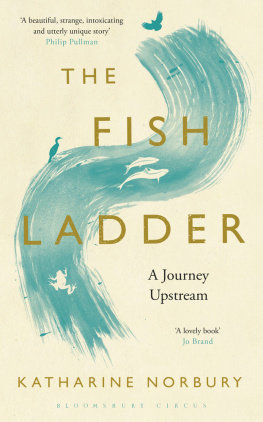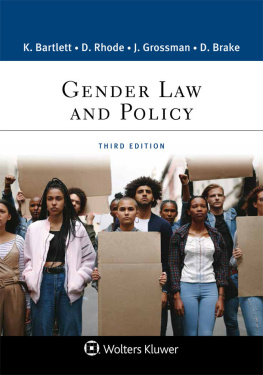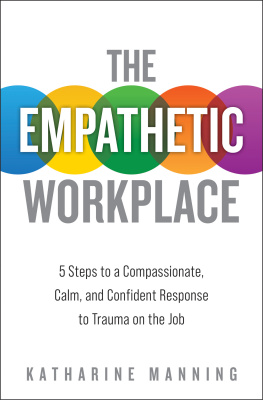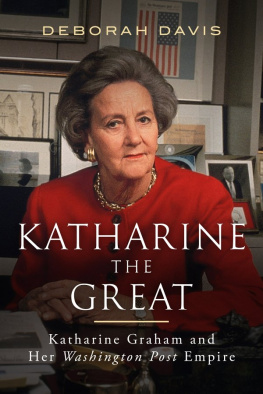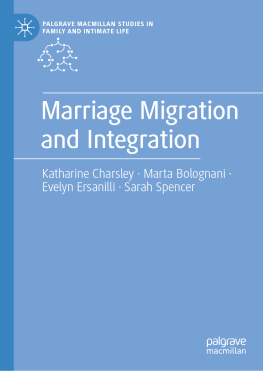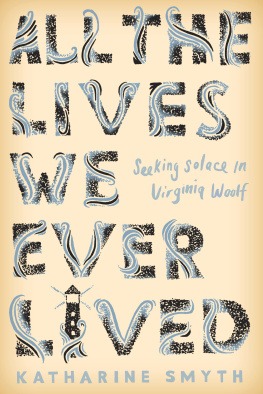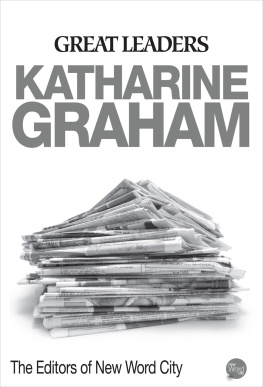I would like to thank the following people: At Bloomsbury, my brilliant and unruffleable editor Alexa von Hirschberg, and the lovely Alexandra Pringle for choosing me; Sarah Barlow, Laura Brooke, Michael Fishwick, Helen Flood, David Foy, Greg Heinimann and fierce-eyed Mary Tomlinson, for helping to make this such a pleasing book. Ariel Bruce for her generosity and for finding my birth family; Joanna Comino for her astute notes and her friendship; Clare Conville for being my nurse, and for feeding me; Jane Coward for her constant friendship and excellent company; Mary Doyle and David Austin for looking after our little family when it all looked a bit grim; Tessa Ettedgui for coming to chemotherapy with me; Robin Farquhar Thomson for insisting that I sing; Sr Maria Goretti and Sr Carmel for remembering the story; Dairmid Gunn and the Neil M. Gunn Literary Estate for being consistently supportive of The Fish Ladder and for telling me where the well was; Claudia Harding McKean, and her team at the Countess of Chester NHS Trust, for saving my life; Olga Jubany Baucells for reminding me that Minerva is also the goddess of healing; Caradoc King for suggesting I record my wanderings and being my friend, teacher and agent; Robert Macfarlane for mistaking me for a writer, for introducing me to The Well at the Worlds End , and for his encouragement, advice and friendship; Fiona McNeil, her team, and everyone at the Royal Marsden for getting me through the worst of it; Jean McNeil at UEA for her faith in the project; Calvin Mitchell for his overwhelming generosity, tender concern and concrete support; the Norbury family: Jean, John, Maria, Anna, Connor and Lauren, for everything; Oba Nsugbe for his extraordinary care, generosity, wisdom and counsel; Deborah Orr for keeping me company when we had no hair; the dear memory of Dennis Pinnington for a lifetime of love, friendship and encouragement, and for being my second reader, although he died before he got to the end; Polly Samson, for her infectious laughter and for being my first reader; Sue Swift and David Flusfeder for being such welcoming neighbours; my brother Robert Thomas, for being there.
The following people have helped in ways as various as themselves: Louise Allen-Jones; John Bernasconi; Sharon Blackie; Jared Brading and the staff of Sacred Heart Primary School; Harvey Cabaniss; Cynthia and John Carson; Amit Chaudhuri; Simon Chu; Andrew Cowan; Linda Cracknell; Kristin Dean; Amy Elliot; Johnny Flynn; Lucy Geldenhuys; Kirsty Gunn; Judy Herbert; Clare Jolly; Bronwen Jones; Julian Kenyon; Yuko Komiya; Nigel Langford; Michael Lengsfield; Jackie Lomax; Sara Maitland; Bishop Vincent Malone; Chrissie OFarrell; Mgr Canon Peter ONeill; Fr Jordi Padro; Jeremy Page; Gwenna Parry Williams; Georgina and William Petty; Noemi Ranz; Jon Riley; Mary Sackville West, Linda Shaughnessy; Meg Sinclair; Peter Straus; Henry Sutton; Gwydion Thomas; Nancy Verrier; Nicola Waddell; Stuart Webley; Amy Wellesley Wood; Sharon Wilkinson; Peter Womack; Mildred Yuan.
My special thanks go to Evie Thomson, my daughter, for her sparkling companionship and for the brilliant drawings in the book, and to Rupert Thomson my friend, husband and souls companion: where can I begin?
Evie wiggled a forefinger through the widening gap at the top of the car window. She was striving to point something out to me and she couldnt express herself fast enough.
Look, Mummy! Look!
Three fox cubs bounced down the hillside, hot loaves knocked out of their tins. As I slowed the car to a stop they righted themselves. A wire fence, tufted with wool, acted as a buffer against a roll into the road. Their faces heaped together, as neat as party sandwiches. After appraising the car and the two of us inside it they circled back where they had come from, ululating, warbling, snout to brush, repeatedly glancing behind them, the next shunting tumble not far off. We marvelled till the cubs were lost it was over before there had been time to steal a picture and when they were gone there was just the Jews harp buzz of the wind in the grass and the dropping notes of skylarks. We had stopped the car on the natural border to the Lln Peninsula in the midst of three peaks known as the Rivals, which gives a combative and brotherly ring to the Anglicisation of Yr Eifl, meaning the strides. Below us, at the bottom of the hill, was Nefyn Bay.
Evie called this place the Misty Moor, after a line in a childrens prayer: Matthew, Mark, Luke and John, hold my horse while I leap on, hold him steady, hold him sure, till I win oer the misty moor . She called it that because the Rivals were usually covered in cloud, even on the hottest days, though on this day the sky was clear but for the odd tugged wisp smoothed over the tops. The island of Anglesey was visible to the north, Cardigan Bay and the mountains of Mid-Wales to the south, and the Wicklow Mountains, across the sea in Ireland, stretched out like a knotted string on the western horizon. Behind us, to the east, the cantilever of Yr Eifls peaks gated off Snowdonia. Ahead, the road spooled towards the volcanic cone of Garn Fadryn. Somewhere on Garn Fadryns flank, very small, not yet visible, was our cottage. The Lln Peninsula floated before us, towing its islands with it, the sea and the sky continuous, indistinguishable one from another.
We pulled up outside the cottage, one of four houses on a crossroads. Tony, who lived in the house opposite to ours, waved from the armchair in his glass porch. He spent most of his days, and nights, in this armchair, a tank of oxygen at his side. I was about to speak to him when Evie clambered over the rendered wall on her way to our front door.
Be careful! The wall had a crack in it from top to bottom and had split into free-standing halves. The pieces gave perceptibly whenever anyone vaulted it. According to Tony it had been like that since the summer of 1984 when, thirteen miles beneath the mountain, the European Plate had eased its position relative to the Mid-Atlantic Ridge. The subsequent earthquake had measured 5.4 on the Richter Scale and remains the most significant seismic movement on record in the British Isles. It had rattled teacups and crumpled chimneys as far away as Liverpool. There was some debate about whether or not ours was one of them. When I first bought the cottage, which is a traditional two-room bothy, the inglenook fireplace was concreted in. I asked a local builder to try to reveal it and Tony had come over in his vest and slippers to watch the work and have a beer. There was no foundation to the house, only mud beneath black tiles. A few inches below the surface an underground stream ran out from the centre of the fireplace and on through the only bedroom. The stream was visible, outside, at either end of the cottage, where it ran clear beneath rusted grilles. The newly revealed inglenook and chimneybreast dominated the room.
You want to watch that, Tony had said. It started shifting after that last rumble. Thats how come it was rendered in. Tony leaned against the mantel and gently scratched his belly with the hand that wasnt holding the bottle. Geraint, the labourer, looked up from the hole that he had dug in the floor. It was filling up with water from the stream, which no longer ran clear. His spade hit something hard. Emlyn, the builder, climbed down into the hole and the two men eased up a pillow of granite from the centre of the fireplace. It belched free of the mud, they curled their arms beneath it, staggered with it, lurched and slipped towards the door, as though carrying a newborn calf. There was an uneasy moment.
Thats the foundation stone, offered Tony.
What? asked Emlyn.
Itll fall down now, for sure. Tony shifted his footing to get a better look in the hole.
You want to mind you dont fall in, Emlyn said. My insurance wont cover it if you do because youre not supposed to be here.
Next page
